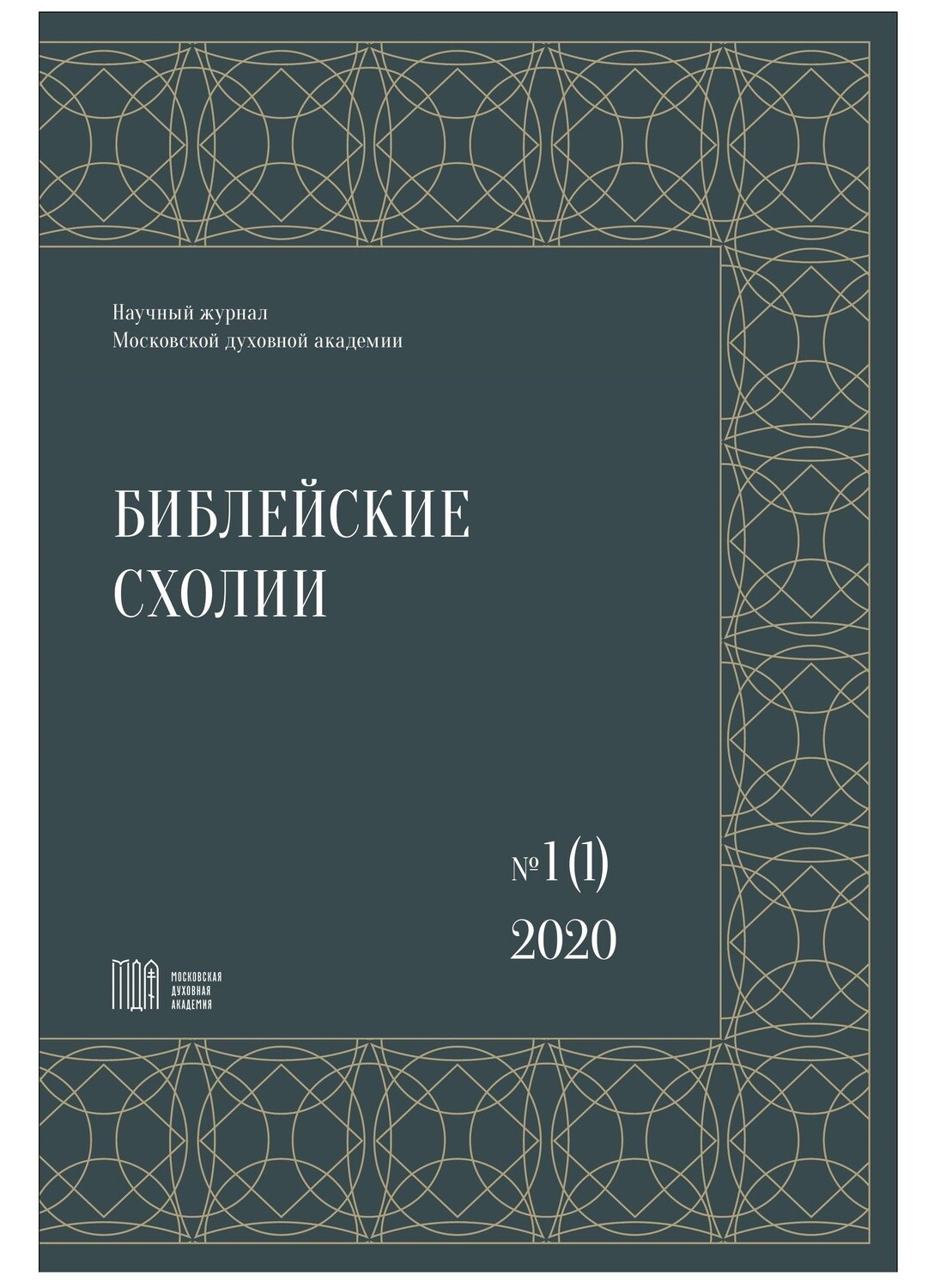Is the Whole Being of Man Created in the Image of God?
DOI:
https://doi.org/10.31802/BSCH.2020.1.1.004Keywords:
The Holy Trinity, The Lord Jesus Christ, the image of God, the likeness of God, personality, theosis, features of the image of GodAbstract
This article attempts to answer the question «is the whole being of man created in the image of God?» in the light of some biblical and theological aspects of the ecclesiastical tradition. There are contradictory judgments in patristic exegesis as to what exactly in man corresponds to the image of God. In this regard, patristic judgments can be divided into two main positions: 1) the image of God is enclosed in the human soul and its forces; 2) the image of God is enclosed in the entire being of man. The second position is more problematic. However, the first position also contains a problem. The purpose of research is to find out what patristic position is the most reasonable. To this end, the author refers to the narrative of Genesis about the creation of man, some passages in the New Testament that say in what relation to God a person should be, to patristic interpretations, as well as to the dogmas of the Orthodox Church. Аccording to the results of this comprehensive study, the author came to two main conclusions: 1) the image of God is enclosed in the whole being of man, however, the whole being of man contains the image of the world; 2) the image of God is extremely similar to the original Image.
Downloads
References
Basilius Magnus. Epistula 38 // PG. T. 32. Col. 325-340.
Epiphanius. Adversus haereses 3, 1. De schismate audianorum // PG. T. 42. Col. 340-373.
Gregorius Nazianzenus. Oratio 31 // PG. T. 36. Col. 133B-172B.
Gregorius Nyssenus. De hominis opificio // PG. T. 44. Col. 125-256.
Ireneus. Contra haereses. Libri quinque // PG. T. 7. Col. 437-1224.
Joannes Chrysostomus. In Genesim. Homilia 8 // PG. T. 53. Col. 69D-76A.
Joannes Damascenus. De fide orthodoxa // PG. T. 94. Col. 789-1228A.
Григорий Богослов, свт. Пять слов о богословии. М.: Храм свв. Космы и Дамиана на Маросейке, 2000.
Иларион (Троицкий), сщмч. Триединство Божества и единство человечества // По образу Святой Троицы. Сергиев Посад: СТСЛ, 2009. С. 68-96.
Ириней Лионский, сщмч. Сочинения святого Иринея, епископа Лионского. СПб.: И. Л. Тузов, 1900. Кн. 5.
Кирилл Александрийский, свт. Толкование на Евангелие от Иоанна. М.: Сибирская благозвонница, 2011.
Новая Женевская учебная Библия. Stuttgart: Hänssler-Verlag, 1998.
Софроний (Сахаров), архим. Единство Церкви по образу Святой Троицы // По образу Святой Троицы. Сергиев Посад: СТСЛ, 2009. С. 97-152.
Творения иже во святых отца нашего Афанасия Великого, архиепископа Александрийскаго.Ч. 1. Сергиев Посад: СТСЛ, 1902.
Творения преподобного Иоанна Дамаскина. М.: Индрик, 2002.
Творения святого Григория Нисскаго. Ч. 1. М.: Тип. В. Готье, 1861.
Творения святого Епифания Кипрского. Ч. 4. М.: Тип. М. Н. Лаврова и Ко, 1880. (ТСО; т. 48).
Творения святого отца нашего Иоанна Златоуста, архиепископа Константинопольского.Т. 4. Кн. 1. СПб.: СПбДА, 1898.
Филарет (Дроздов), свт. Записки, руководствующие к основательному разумению книги Бытия, заключающие в себе и перевод сей книги на русское наречие. М.: Московское Общество Любителей Духовного Просвещения, 1867.
Антоний (Храповицкий), митр. Нравственная идея догмата Пресвятой Троицы // По образу Святой Троицы. Сергиев Посад: СТСЛ, 2009. С. 5-67.
Арко А. В Нём избрал нас. Богословская антропология. СПб.: Алетейя, 2003.
Зыков В. С. Образ Божий: «мужчина и женщина» или «ни мужского пола, ни женского»? //Вестник Свято-Филаретовского института. М., 2019. Вып. 30. С. 40-73.
Иларион (Алфеев), еп. Жизнь и учение святителя Григория Богослова. М.: Сретенский монастырь, 2007.
Иларион (Алфеев), митр. Иисус Христос. Жизнь и учение. Кн. 2: Нагорная проповедь. М.:ОЦАД РПЦ МП; Сретенский монастырь; Эксмо, 2016.
Ковшов М. В. Сотериологический аспект библейского учения о личном бытии человека.Диссертация на соискание учёной степени кандидата богословия. Сергиев Посад:МДА, 2009.
Лосский В. Н. Боговидение. М.: АСТ, 2006.
Таланкин В. Святоотеческое воззрение на смерть: опыт систематизации религиозно-философского учения св. Григория Нисского о смерти // Вера и разум. 1908. № 10.С. 631-652.
Филон Александрийский. Толкования Ветхого Завета. М.: ГЛК Ю. А. Шичалина, 2000.
Юнгеров П. А. Повествование о творении мира и человека в 1, 2 и 5 главах книги Бытияв отношении к вопросу о происхождении и писателе книги // Православный собеседник. 1880. № 4. С. 394-414.
Bird P. A. «Male and Female He Created Them»: Gen 1:27b in the Context of the Priestly Account of Creation // The Harvard Theological Review. 1981. Vol. 74. № 2. P. 129-160.
Lossky V. N. A l'image et a la ressemblance de Dieu. Paris: Aubier-Montaigne, 1967.
Lossky V. N. Essai sur la théologie mystique de l'Église d'Orient. Paris: Aubier-Montaigne, 2008.
Simango D. The image of God (Gen. 1, 26-27) in the Pentateuch: a biblicaltheological approach.Potchefstroom: Potchefstroom Campus, 2006.
Downloads
Published
How to Cite
License

This work is licensed under a Creative Commons Attribution-ShareAlike 4.0 International License.






